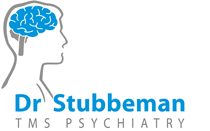
Transcranial Magnetic Stimulation: What Is It and Who Needs It?
By Kirstin Fawcett | Dec. 15, 2014 | 11:58 a.m. ES
© 2015 US News & World Report LP. All Rights Reserved.

By the time she was 61, Martha Rhodes had spent decades battling intractable depression. Diagnosis: treatment-resistant major depressive disorder. She’d tried a variety of medications to no avail; most were ineffective or caused nausea, diarrhea, weight gain and mood swings. During one particularly low evening in 2009, she attempted suicide. And every morning when she awoke, she experienced what she describes as “an emotional nausea – it was like this feeling of, ‘Why am I still here? Why do I have to be alive?’”
But four years ago, Rhodes, now 65, of Danbury, Connecticut, underwent a procedure she says saved her life: repetitive transcranial magnetic stimulation, which uses magnetic pulses to electrically stimulate nerve cells in the brain and is used by doctors to relieve symptoms of depression.
“My feelings of hopelessness, wishing I were dead and that life wasn’t worth living – all of that went away,” recalls Rhodes, who chronicled her experience with TMS in her 2013 book “3,000 Pulses Later.” Rhodes says she shares her story with others to demystify the treatment – which is often misunderstood by both patients and doctors, though it’s increasingly used by medical practitioners nationwide.
What Is TMS?
TMS was first developed in the early 1980s, but it was only approved by the Food and Drug Administration in 2008 for patients like Rhodes, who’ve unsuccessfully tried one or more medications for their treatment-resistant depression and want to explore other options. That’s according to Mark George, a professor at the Medical University of South Carolina in Charleston.
Depression, George says, is a disease that stems from a lack of activity in certain parts of the brain – specifically the prefrontal cortex, the region right above the eyes that helps regulate emotions. TMS is a technology that allows doctors to noninvasively stimulate that part of the brain and “exercise it back into health.”
During TMS, George says, a doctor takes a hand-held electromagnetic coil and holds it up to the front left side of the patient’s skull for nearly 40 minutes. The electricity creates a powerful magnetic field, which passes into the brain and causes neurons to fire electrical impulses. In turn, the electrical impulses encourage a chemical reaction that, over time, helps lift mood.
TMS is different from other brain-stimulation therapies, like electroconvulsive therapy. During ECT, patients receive anesthesia and are stimulated across the scalp with a very small electrical current. The current induces a short brain seizure, which produces changes in the brain’s functioning and chemistry. TMS, on the other hand, is a nonconvulsive procedure; patients don’t have a seizure, and they are awake and alert the entire time. There are also no cognitive side effects or memory loss in TMS, which physicians say are common – although benign – in patients who undergo ECT.
“But in some ways, the two procedures are similar,” George says. “We’re trying to reset and wake up connections in the brain that aren’t really working well.”
What Is It Like?
Five days a week, Rhodes, a former advertising executive, traveled to Hartford Hospital’s Institute of Living in Hartford, Connecticut, where she sat in a comfortable reclining chair with a magnetic coil affixed to the side of her head delivering 3,000 pulses to her prefrontal cortex. She was able to watch TV, read, receive visitors and relax. After the day’s procedure was finished, she drove herself home. This lasted six weeks, with a total of 30 sessions – a standard duration, doctors say, for a course of TMS. (Some patients decide to get TMS for shorter or longer periods – say, four or seven weeks – depending on their needs.)
Rhodes compared the sensation of having electrical pulses delivered to the side of her head in the form of four, 10-pulse bursts in a row (with a rest period of 26 seconds between each interval) to a woodpecker pecking her skull. She also had to wear earplugs to drown out the noise of the machine, which makes a loud tapping sound.
The treatment was “jarring” at first, but eventually Rhodes got used to it. Then about four weeks in, after her 19th or 20th daily session, she “felt this lightness,” she remembers. “All of the sudden, this cloud was gone.” Her depression had finally lifted – and right on schedule, according to doctors, who say that patients often experience relief from TMS within two to four weeks.
What Are the Side Effects?
There’s a very low risk of patients experiencing a seizure in TMS, says Irving Reti, an associate professor of psychiatry at Johns Hopkins University School of Medicine and director of the Brain Stimulation Program at Johns Hopkins Hospital. Side effects typically include a minor headache and localized pain underneath the magnetic coil.
Another possible side effect, says Lindsey Carpenter, chief of the Mood Disorders Program and the Neuromodulation Clinic at Butler Hospital in Providence, Rhode Island, is a twitching or vibrating sensation around the face, cheek or scalp.
Rhodes says she didn’t experience any of the above symptoms, although she did occasionally take Tylenol to ward off potential pain.
